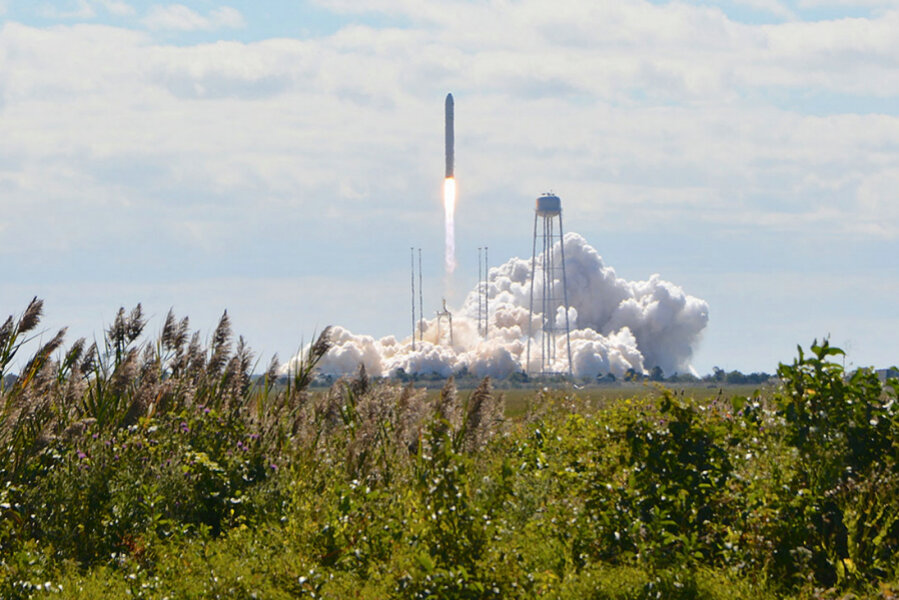Launch wars: Commercial space race reignites as Orbital ATK heads to ISS
Loading...
In many ways, 2015 has been a terrific year for the budding commercial spaceflight industry.
SpaceX had five successful launches, delivering satellites into orbit and supplies to the International Space Station (ISS). United Launch Alliance, a partnership between Boeing and Lockheed Martin, celebrated its 100th consecutive successful launch in October. Blue Origin took an important step toward reusable rockets by achieving a vertical soft landing following a short suborbital flight in November.
But the industry has also had some expensive failures this year. In June, a SpaceX Falcon 9 rocket exploded minutes after takeoff, destroying millions of dollars worth of supplies that would have reached the ISS. International Launch Services, a joint venture between American and Russian aerospace companies, suffered a setback in May when one of its Proton rockets failed and burned up in the atmosphere.
Now, as several companies prepare to return to flight after setbacks, the commercial space industry hopes to prove its dependability and safety to government agencies and the public.
After all, SpaceX has had only one failure in almost 20 launches since its qualification flight in 2010. NASA suffered many similar launch failures in the late 1950s and early 1960s, when scientists were developing rocket technology.
On Thursday, a Cygnus capsule, built by Orbital ATK, will launch atop a United Launch Alliance Atlas V rocket from Cape Canaveral in Florida. The Cygnus will carry more than 7,000 pounds of supplies to the crew of the ISS. And later in December, or early in January, SpaceX plans to perform a separate ISS-resupply mission using a Dragon capsule and a Falcon 9 rocket.
But there’s more at stake than the refurbishment of the commercial space industry’s image. NASA is preparing to award a new $3.5 billion 7-year contract to deliver supplies to the ISS to two companies. Right now, SpaceX, Orbital, and underdog Sierra Nevada are competing for the contract, which NASA says will be awarded in January. To win it, the companies need to rack up successful launches to prove the maturity and reliability of their technology.
NASA wants to be able to launch supplies – and, eventually, astronauts – to the ISS from American soil, using American technology. The Administration has been relying on Russia and Japan to keep the ISS supplied since the Falcon 9 crash this summer, and every astronaut to travel to or from the ISS since the final Space Shuttle mission in 2011 has done so aboard a Russian Soyuz craft. Russia will charge the US more than $70 million per Soyuz seat starting in 2016 – and American launch companies say they will be able to deliver astronauts safely to and from the ISS for a fraction of that price sometime in the next few years.








